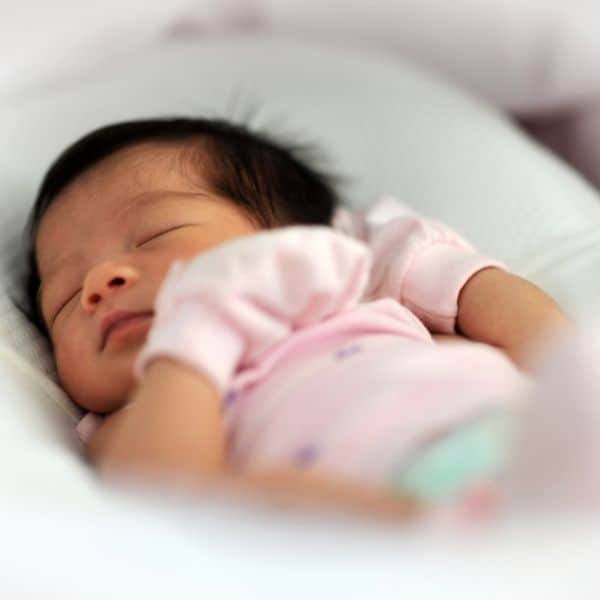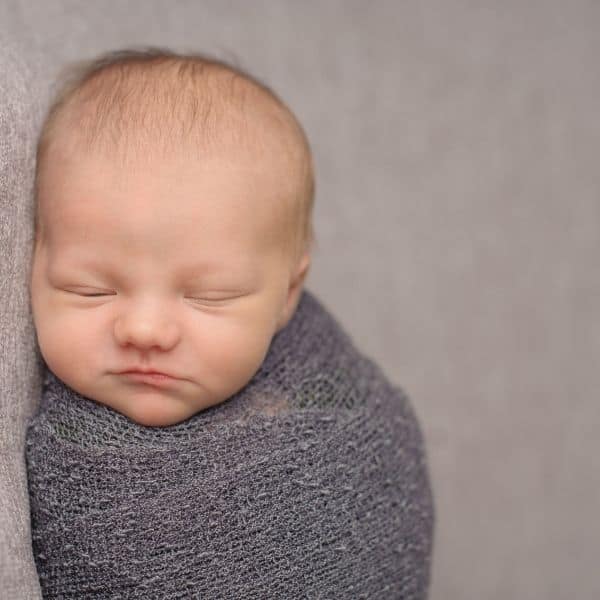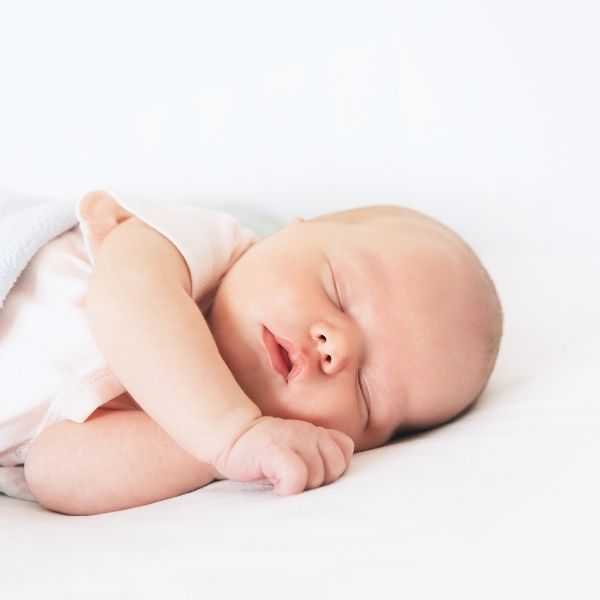There’s no simple answer to that question.
Babies lose a lot of heat through the surface of their heads and hands. So, the answer to the question from the title should be obvious, right?

Not really.
Because headwear and mittens come with risks of their own, like overheating.
You might see pediatricians recommending protective mittens, but it has nothing to do with cold hands, it’s about protecting their delicate faces from scratches.
Today, I’ll do my best to help you decide when you should (and shouldn’t) cover your baby’s hands.
Take a deep breath
It’s easy for a parent’s mind to run amuck with worry, I understand that.
Why are their hands cold even in a warm room or a snug swaddle?
Are they coming down with something? What should I do?
I can tell you this right now – in a vast majority of cases, cold hands are normal and do not indicate any serious issues.
With that out of the way and peaceful mind, let’s learn a few tidbits of information on baby temperature regulation so you never have to worry about it again.
First things first – getting the environment right
Even though cold hands don’t mean that you’re doing something wrong, do take a moment here to tick off some “best practice” boxes for good measure.
Dress them right
Layers are the name of the game. Don’t overload them with hefty clothes, instead, go with thin layers that will be easy to put on and remove.
Baby room temperature
Making the room too hot is one of the more common mistakes new parents make.
The sweet spot is between 68 to 72 ° F or 20 to 22 °C.
Swaddle for winter nights
If you live in a colder climate where the baby’s room temperature drops below 64.4° F (18 °C), you’ll want to use a warm swaddling blanket to keep them warm.

If you have a restless sleeper on your hands (like I do) try using a wearable blanket (sleeping bag).
You can see my guide on whether you should swaddle your baby here.
Keep the baby away from moving air
Ideally, your baby’s crib should be placed at least a few feet away from drafty windows, air vents, or fans.
How to keep a baby’s hands warm at night?
If you decide that they need the extra warmth for their hands, a soft pair of mittens will do the trick of keeping their hands warm.
Signs your baby is cold at night
If your baby is cold at night, their nose and neck will be cold to the touch.
What causes cold hands in babies?
Cold hands in babies typically happen because they can’t regulate whole-body temperature as fast as an adult.
Now, that might sound odd because we’ve all heard that babies have a higher core temperature than an adult.
And that’s true. To a point.
Baby sleep temperature guidelines
According to the AAP (American Academy of Pediatrics) normal body temperature range for a baby is 97-100.4 ° F ( (36.1-38 °C), while the normal temperature range for an adult is 97-99 ° F (36.1-37.2 °C).
It’s all about core temperature
While it is true that a baby’s core temperature is higher, the regulation mechanisms are not fully formed. As a result, their body prioritizes the core and doesn’t heat the legs, arms, and hands evenly.
That’s why cold hands typically happen at periods of change, like when you stop swaddling them. Their tiny bodies are getting used to new temperature patterns and there’s nothing wrong with that.
To sum up – if your baby’s hands are cold, it’s a good idea to check their tummy. It will be warm pretty much at all times.
Circulation and activity
Cold hands in babies have the same cause as in adults, less blood flowing to the area.
So, the same logic applies.
Newborns live an exciting life of sleeping and eating. The low activity levels mean less blood is getting to their hands and feet and the little limbs get cold.

As they get more active, the cold hands are likely to warm up without any action on your part.
On top of that, most of the blood they have is being used for more important things than keeping their hands warm, like developing the organs. That’s why many newborns tend to have bluish skin. It’s a harmless “condition” called acrocyanosis and it lasts for no more than a few hours or days.
The “however” section
aka. when to take action
I know that you probably don’t like to read about anything that might carry even a hint of bad news.
What I said above still stands – it’s most likely that cold hands are nothing to worry about.
But cold hands can also indicate fever or, other, more serious problems.
Fever as a cause of cold hands
If your little one has a fever (temperature over 100.4°F), their body is too busy fighting off germs to provide enough blood for the hands and feet.
You can read more about recognizing fever symptoms at WebMD here.
More serious causes
If your baby has cold hands followed by bluish patches on the body or lips, it might be an indication of a more serious problem.
That’s definitely a time to call your pediatrician right away.
In conclusion
Deciding if you should cover your baby’s hands at night goes beyond hot or cold. It’s about comfort.
If you can cover them without the risk of overheating, you can do it.
If you don’t, that’s also fine – in most cases, cold hands are a normal phase of your baby’s development.
Paul is a passionate dad who founded Upside Dad to share his parenting journey with other new parents. He graduated from Concordia University and worked as a test engineer for over a decade. Paul loves dad jokes and craft beer.
Learn more about Paul and Upside Dad here.
